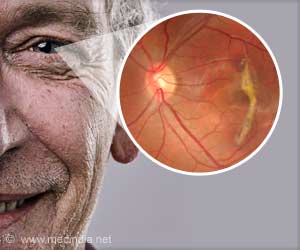The new research has answered this important question by focusing on two different varieties of AMD that can be seen with advanced retinal imaging.
AMD is the leading cause of visual impairment and blindness in people over 65 years old and is the result of damage to the central area of the retina called the macula, which is responsible for reading and driving vision.
One major form of early AMD is called drusen, where small yellow cholesterol deposits form in a layer under the retina. They can deprive the retina of blood and oxygen, leading to vision loss. Drusen formation can be slowed by appropriate vitamin supplementation.
Advertisement
The other major form of early AMD is the presence of subretinal drusenoid deposits (SDD), which is lesser known and requires high-tech retinal imaging to detect.
These deposits are also made of fatty lipids and other materials, but they form in a different layer beneath the light-sensitive retina cells, where they are also associated with vision loss. Currently, there is no known treatment for SDD.
Does Eye Disease Affect Chances Of Getting Heart Disease?
Researchers analyzed 126 patients with AMD, using optical coherence tomography (OCT)an advanced imaging system that provides high-resolution cross-sectional scans of the retina. Patients also answered questionnaires about their health history including heart disease and stroke.
Of the patients in the study, 62 had SDD and 64 had drusen; 51 of the 126 total patients (40 percent) reported having cardiovascular disease or a past stroke, and most (66 percent) of those patients had SDD[2].
By contrast, of the 75 patients who did not have known heart disease or stroke, relatively few (19 percent) had SDD. In statistical terms, patients with cardiovascular disease or stroke were three times more likely to have SDD than patients without.
Researchers suggested that the underlying heart and vascular disease likely compromise blood circulation in the eye, leading to the SDDs beneath the retina and ultimately causing vision loss and blindness.
The poor ocular circulation that causes SDDs is a manifestation of underlying vascular disease. This has important public health implications and can facilitate population screening and disease detection with a major impact.
On the other hand, if clinically substantiated in prospective studies, SDDs could emerge as a risk marker for underlying vascular disease in asymptomatic patients in primary care or a cardiology clinic. The temporal relationship between SDDs and macrovascular disease will also need to be established in prospective studies which are currently in progress.
Researchers also collected patient blood samples, and results show genetic risk factors may also play a role in SDD cases in addition to vascular causes. Specifically, they found that the ARMS2 gene acted independently of vascular disease to cause SDD in some patients.
This study further demonstrates that AMD is not a single condition or an isolated disease, but is often a signal of systemic malfunction which could benefit from targeted medical evaluation in addition to localized eye care.
It helps bring us one step closer to unraveling the mystery of this horrible condition which robs so many patients of the pleasure of good vision during their later years.
References :
1.
2.
Source: Medindia



